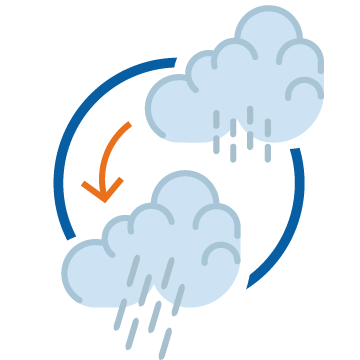Reliable estimation, forecasting and analysis of rainfall and related hydro-meteorological variables are essential for effective and sustainable water resources and weather risk management.
Teamed with advances in statistical methods and computing technologies, increasingly available hydro-meteorological data offers a wealth of opportunities to improve the monitoring, analysis and management of water systems. However, this data is acquired from a variety of sources with varying quality, which often enhances the problem of how best to handle and make use of it to inform decision making.
Rain++ offers tools and customised solutions to help address these challenges.
Core techniques: Based upon cutting-edge stochastic methods, geo-statistics and hydro-meteorological research, and making use of advanced computing technologies, Rain++ offers four core techniques for handling and enhancing rainfall estimates and forecasts:

Our geostatistical methods integrate the advantages of data from multiple sensors.

Our stochastic methods generate rainfall estimates at the required scales.

Our tools, based on computer vision and machine learning, provide reliable forecasts.

Our stochastic tools, combined with the latest climate projections, shed light upon future rainfall.
These techniques can be deployed as stand-alone or web-based services both for offline as well as real-time applications. Alternatively, they can be customised and embedded within the client’s operational system to meet operational requirements.
Bespoke solutions: At Rain++ we are happy to help you tackle other hydrometeorological challenges requiring specialised statistical, hydro-meteorological and computational skills. We have experience in projects ranging from weather insurance product design to operational system implementation. Check out our projects for more information.
Rain++ consists of experts in engineering, mathematics and computing from academia and beyond, coordinated by our core team:

Hydrometeorologist and Hydraulic Modeller

Engineering Mathematician

Hydrologist and Hydraulic Network Modeller